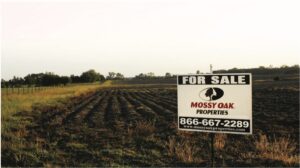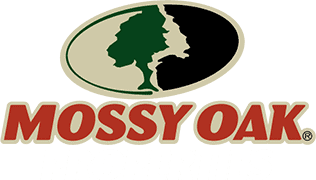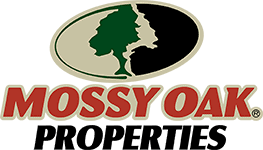A Comprehensive Guide to Buying Rural Land
Step 1: Why do you want to purchase land?
Many Americans dream of owning a place to escape the daily grind and connect with the great outdoors, whether it’s a coastal getaway, a mountain retreat, or a piece of land in Rural America for hunting, fishing, farming, and creating memories with family. To ensure a successful land purchase, it’s important to pay attention to physical characteristics such as accessibility, as road access is necessary for profiting from the investment.
At Mossy Oak Properties, we understand the fulfillment that comes with owning land and take our role of advising buyers and sellers of rural property seriously. While we always recommend working with a specialist to guide you through the land-buying process, this article provides basic knowledge for determining if purchasing land is a realistic proposition for you and your family. Land can serve a variety of purposes, from building a dream home or investing in real estate to using it for recreational activities or farming. Ultimately, purchasing land can be a valuable asset and provide opportunities for personal and financial growth.
It’s important to understand that the land-buying process is a journey. Just like any journey, developing a roadmap and knowing the important details before embarking is crucial. This includes understanding the necessary steps and procedures involved in buying land, as well as knowing what to look for when searching for the perfect piece of property.

Step 2: Ensure that you have sufficient funds to buy land.
Ensuring that you have sufficient funds before planning to buy land is crucial to avoid financial strain and potential risks. Purchasing land can be a significant investment, and it’s important to consider all the costs associated with buying the land. These costs include the purchase price, closing costs, appraisal fees, survey fees, and any other expenses associated with the purchase. It’s important to have a clear understanding of the total cost of purchasing the land and ensure you have the funds available to cover these costs.
Additionally, having sufficient funds can also help mitigate potential risks associated with purchasing land. For example, if you purchase land with a mortgage and are unable to make the payments, you risk losing the property and damaging your credit. By having sufficient funds to cover the costs of purchasing the land outright, you can avoid the risks associated with taking on debt. Furthermore, having additional funds can provide a buffer in case unexpected expenses arise during the land-buying process, such as unforeseen repairs or legal fees. Ultimately, ensuring you have sufficient funds before planning to buy land can help you make a sound investment and avoid financial stress.
Step 3: Connecting with a Mossy Oak Properties Land Specialist
After a buyer has developed a priorities list and understands their budget, it is time to visit a local Mossy Oak Properties land specialist to discuss their priorities list and budget. A good land specialist can explain if that list is realistic or if a buyer needs to reconsider some factors.
“When we meet a first-time land buyer, we try to sit down with them and go over their goals,” said Terrell Brazell, Owner, and Broker of Mossy Oak Properties Coastal Land and Real Estate in St. Mary’s, Georgia. “We need to set basic priorities, prioritize what they want to do with the property, get them to help us understand exactly what they’re looking for, and try to fit that into a budget.”
They will also be able to scan their inventory and the inventory of others in the market to find a range of properties that may fit a priority list. Additionally, they may know of properties not actively on the market that might be a possibility.
“A good land specialist will put the buyer’s interest first and will not show them properties that are out of their reach financially,” Brazell said. “We can help show them how to accomplish their goals, whether that is a smaller piece of property that checks all their boxes or a property that is more acreage but may garner a lower price for whatever reason. There are often properties that need a little vision and sweat equity but can provide a better long-term value than a property that is what we call turn-key.”
Land specialists will also be able to provide insight that other agents might not be able to provide, such as understanding soil types and reading topo maps, in addition to having tools such as aerial mapping software that can make the process easier. They also understand the underlying emotion that comes with a land purchase because many of them own rural land also. Most importantly, they have the experience of specializing in a certain type of property that many residential or commercial-focused real estate agents lack an understanding of.
 |
Would you like to download the ebook version of this article? |
Step 4: Choosing the right type of land
 There are several types of land that you may come across when purchasing land, and it is essential to understand them before making a purchase decision. The type of land you purchase will determine its intended use, zoning regulations, and building requirements, among other things.
There are several types of land that you may come across when purchasing land, and it is essential to understand them before making a purchase decision. The type of land you purchase will determine its intended use, zoning regulations, and building requirements, among other things.
For instance, residential land is intended for homes, while commercial land is meant for businesses. Agricultural land is for farming or ranching, and industrial land is for factories and warehouses. Recreational land is used for recreational activities, while waterfront land is located adjacent to a body of water.
Understanding the type of land you are purchasing is crucial because it will help you make an informed decision on the use and development of the property. It will also help you understand the zoning regulations and building requirements in the area, which can affect the development potential and resale value of the land. By knowing the type of land, you can assess the risks and opportunities involved in the purchase and make a sound investment decision.
Research the land market.
Conducting research on the land market as a buyer is essential to ensure you make informed decisions when purchasing a property. To start, it’s crucial to identify your requirements and preferences for the land, such as location, size, and zoning restrictions. Afterward, you can begin your research by using online resources, such as Mossy Oak Properties, to gather information on available land listings that match your criteria.
Once you have a list of potential properties, you can further research each one by looking into factors such as the property’s historical sale prices, current market values, and any potential environmental issues that may affect its value. Additionally, you can research the local zoning laws and regulations to ensure the property can be used for your intended purpose. Furthermore, conducting a title search is essential to ensure there are no existing liens or legal disputes over the land. By conducting thorough research, you can make a well-informed decision and find the right piece of land for your needs.
Factors to consider when buying land
 When buying land as a buyer, several factors must be considered to ensure you make an informed decision. Firstly, it’s important to consider the location of the land. Factors such as proximity to major roads, infrastructure, and amenities can impact the land’s value and the potential for development. You should also consider the local zoning laws and regulations that may restrict land use. Additionally, you may want to evaluate the surrounding area’s growth potential and the potential for property values to increase in the future.
When buying land as a buyer, several factors must be considered to ensure you make an informed decision. Firstly, it’s important to consider the location of the land. Factors such as proximity to major roads, infrastructure, and amenities can impact the land’s value and the potential for development. You should also consider the local zoning laws and regulations that may restrict land use. Additionally, you may want to evaluate the surrounding area’s growth potential and the potential for property values to increase in the future.
Another factor to consider when buying land is the property’s physical characteristics. The land’s topography, soil type, and vegetation can impact its value and potential uses. For example, if the land has steep slopes or is prone to flooding, it may be difficult or costly to develop. Additionally, if the soil is not suitable for certain crops, it may not be ideal for agricultural use. By evaluating the physical characteristics of the land, you can determine if it is ideal for your intended use.
Lastly, it’s important to consider any legal issues related to the land. For example, you may want to conduct a title search to ensure no existing liens or legal disputes over the land. Additionally, you may want to research any easements or right-of-ways that may affect the land’s value or restrict its use. By considering these legal factors, you can ensure you purchase a clear and marketable title to the land.
Step 5: Get the survey and environmental tests done.
 Conducting environmental tests and surveys before purchasing land is crucial to avoid costly mistakes and ensure that the land is suitable for your needs. Environmental tests can help identify any hazardous materials, soil contamination, or other environmental concerns that may affect the land’s value or potential use. This information can also help identify any potential health hazards that may be present, ensuring that you and your family are safe if you plan to live on the land.
Conducting environmental tests and surveys before purchasing land is crucial to avoid costly mistakes and ensure that the land is suitable for your needs. Environmental tests can help identify any hazardous materials, soil contamination, or other environmental concerns that may affect the land’s value or potential use. This information can also help identify any potential health hazards that may be present, ensuring that you and your family are safe if you plan to live on the land.
Similarly, surveys provide valuable information about the land, such as property boundaries, topography, and easements. Surveys can identify any encroachments or boundary disputes that may impact the land’s value or your use of the property. This information can also help you plan for any improvements or development on the land, ensuring that you can make informed decisions based on accurate data. Ultimately, conducting environmental tests and surveys is a crucial step in the land purchase process that can save you time, money, and headaches down the road.
Step 6: Make an offer to the seller.
When making an offer to a land seller after completing a survey, there are several steps you can follow to ensure a successful transaction. The first step is to determine the fair market value of the land based on the results of the survey. This will help you make an offer that is both fair and reasonable. You should also determine your budget and decide how much you are willing to pay for the land.
Once you have established the fair market value and your budget, the next step is to contact the seller or their representative and express your interest in purchasing the land. Let them know that you have completed a survey and that you would like to make an offer. When making your offer, be sure to present all the relevant details, including the purchase price and any contingencies you want to include in the sale. For instance, you may want to include a contingency that the sale is subject to a satisfactory title search.
Negotiation is an integral part of the process, so be prepared to go back and forth with the seller until you reach an agreement that works for both parties. Once you have agreed on the terms of the sale, it’s important to put the agreement in writing. This can be done through a purchase agreement or contract, which should include all the details of the sale, including the purchase price, any contingencies, and the closing date. Remember that working with a real estate attorney or other qualified professionals can help you navigate the legal aspects of the transaction and ensure that your interests are protected throughout the process.

Step 7: Determine your payment method for the land acquisition
When acquiring land, different payment methods are available, and choosing the right one can significantly impact your investment. Here are some payment methods that you can consider:
Cash
Paying for land with cash is the most straightforward payment method. It eliminates the need for financing, and there are no interest rates to worry about. If you have sufficient cash reserves, this payment method can offer a lot of benefits. However, it may not be a viable option for some buyers.
Bank or Credit Union Financing
This payment method involves borrowing money from a bank or credit union to purchase the land. The interest rate you receive may depend on your credit score and other factors. The advantage of this payment method is that you can spread the cost of the land over several years. However, it may require a down payment and may not be suitable for all buyers.
USDA Loans
The US Department of Agriculture (USDA) offers loans to individuals looking to buy land in rural areas. The interest rates for these loans are typically lower than conventional loans, and they may not require a down payment. However, the eligibility criteria can be strict, and the land must meet specific requirements.
SBA 504 Loans
The Small Business Administration (SBA) offers loans to small business owners looking to buy land for commercial purposes. These loans offer long-term financing with fixed rates and lower down payments. However, they may require a higher credit score and can take longer to process than other loan options.
Home Equity Loans
If you own a home and have built up equity, you may be able to use a home equity loan to purchase land. This payment method offers low-interest rates and may not require a down payment. However, it may put your home at risk if you are unable to make the payments.
Ultimately, when determining your payment method for land acquisition, you should consider your financial situation, eligibility for financing options, and the long-term impact of each payment method on your investment. It’s crucial to make an informed decision to ensure that you can make payments comfortably and meet your financial goals.
How Much Do You Need to Put Down on Land?
The amount you need to put down on land varies depending on the purchase price and your financing options. If you’re purchasing the land outright with cash, there may be no down payment required. However, if you’re financing the purchase, you may need to put down a percentage of the purchase price as a down payment. Typically, lenders require a down payment of at least 20% of the purchase price for land loans.
It’s important to note that some financing options, such as USDA loans, may not require a down payment. However, these loans have strict eligibility requirements and may only be available for certain types of land in rural areas. Additionally, some lenders may require a higher down payment for high-risk properties or if you have a low credit score. Ultimately, the amount you need to put down on land depends on your specific circumstances and financing options. It’s important to research your options and work with a reputable lender to determine the best payment plan for your investment.
Step 8: Close on the land purchase.
 Once you have negotiated the terms of the sale with the seller and both parties have agreed to the terms, it’s time to accept the contract. This means signing the contract and returning it to the seller, indicating that you agree to the terms of the sale. It’s important to review the contract carefully before signing to ensure that all terms are acceptable and that there are no hidden costs or liabilities.
Once you have negotiated the terms of the sale with the seller and both parties have agreed to the terms, it’s time to accept the contract. This means signing the contract and returning it to the seller, indicating that you agree to the terms of the sale. It’s important to review the contract carefully before signing to ensure that all terms are acceptable and that there are no hidden costs or liabilities.
After accepting the contract, you will need to deliver the deposit, also known as the earnest money. The deposit is typically a percentage of the purchase price that demonstrates your commitment to the sale. The deposit is usually delivered to an escrow agent or attorney, who will hold the funds until the sale is finalized. The amount of the deposit is negotiable and may vary depending on the purchase price, location, and other factors.
Once the deposit is delivered, the purchase agreement can be completed. The purchase agreement outlines the terms of the sale, including the purchase price, contingencies, closing date, and any other relevant details. It’s important to review the purchase agreement carefully before signing to ensure that all terms are acceptable and that there are no hidden costs or liabilities. By completing these steps, you can finalize the purchase of the land and take the first step toward realizing your investment goals.
 |
Download and print the PDF version of this article! |


